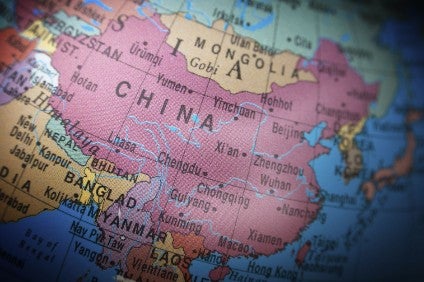
China’s apparel and footwear exporters have been hit the hardest by coronavirus-led demand shocks, a new report has found, with the two sectors having shown no signs of recovery.
Exports of apparel, as well as upstream textile materials, have recovered only slightly from the coronavirus effect, still down by 20%-30% in the first five months of 2020, according to Finch Ratings’ China Corporate Snapshot – June 2020.
For apparel, knitted or crocheted, exports were down 28.2% to US$71.4m, representing 2.9% of China’s total exports. For apparel, not knitted or crocheted, exports were down 20.3% to $66.7bn, representing 2.7% of exports.
Other badly affected consumer goods include footwear, handbags and other leather goods, according to the report.
China’s total exports – measured in US dollars – fell by 3.3% year-on-year in May following a rebound of 3.5% in April. April’s export recovery was driven by delayed deliveries of February-March orders and some overseas clients’ restocking in fear of transportation disruptions.
Fitch Ratings expects the extent of the fall in exports to widen in the next few months, as indicated by the New Export Order subindex of China’s manufacturing PMI hovering at 35.3% in May 2020, compared with 46.5% over the same period in 2019.

US Tariffs are shifting - will you react or anticipate?
Don’t let policy changes catch you off guard. Stay proactive with real-time data and expert analysis.
By GlobalData“Exporters are likely to receive some policy support in light of the government’s priority to protect employment,” Fitch analysts say. “The export sector forms an important part of the economy by creating 200m jobs both directly and indirectly, according to the Ministry of Commerce, among which 80m workers are migrant workers.”
China’s exports to Asian trade partners are relatively more resilient, having emerged earlier from the strict lockdowns than western countries. Exports to Taiwan, Singapore, Vietnam and Thailand grew by 7%, 6.5%, 5.5% and 4.6%, respectively, in the first five months of the year, while the fall in export value to Japan and South Korea narrowed to 1.6% and 5.6% after temporary plunges in the first quarter.
Exports to the European Union (EU) also rebounded in April and May, albeit still declining by 4.1% in the five months of 2020, driven by the anti-virus and stay-at-home-related sales as well as restocking of certain upstream products. In contrast, China’s exports to the US slumped by 14.3% – on top of a 12.5% drop in 2019.
Noticeably, China’s exports to the developing countries including India, Brazil and South Africa have deteriorated since April due to local lockdown measures and a weakening economic outlook.
Fitch warns, however, that those Chinese exporters focusing on the western market, especially those in the hard-hit consumer goods sector, are likely to see the highest pressure of business disruption in 2020.
Some companies have turned to the domestic market to clear out inventory and keep business running. In April, domestic sales of Chinese exporters grew by 17% year-on-year, according to the Ministry of Commerce.
However, the transition is unlikely to be smooth, Fitch analysts say. “The domestic environment already faces intensified competition, with obstacles including different consumer preferences, lack of proprietary brands and distribution channels, competition which is already intensified in onshore markets, as well as intellectual property disputes with their OEM clients.”




